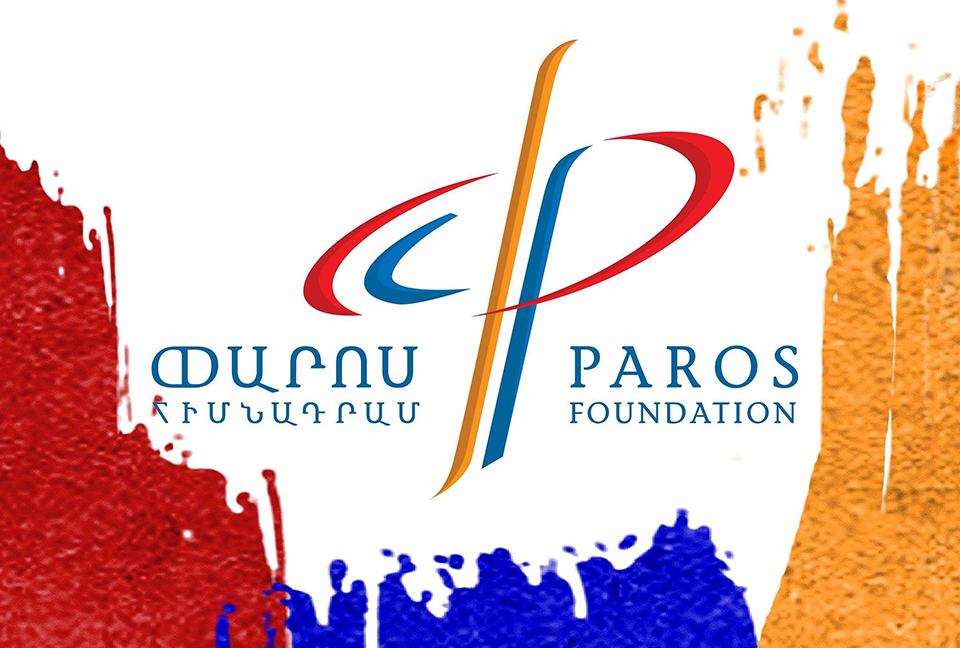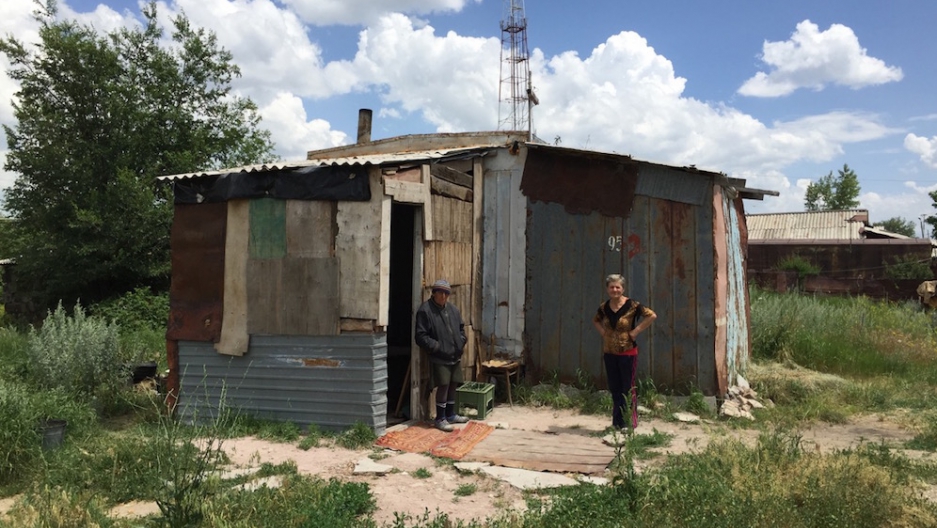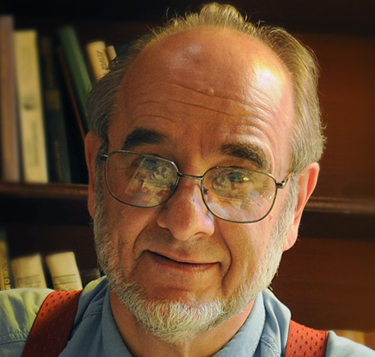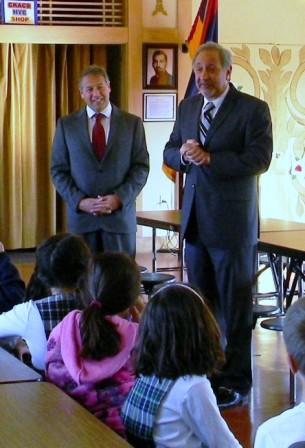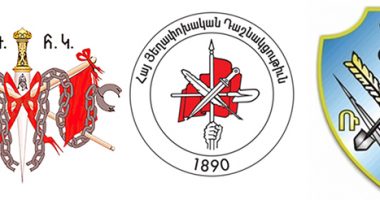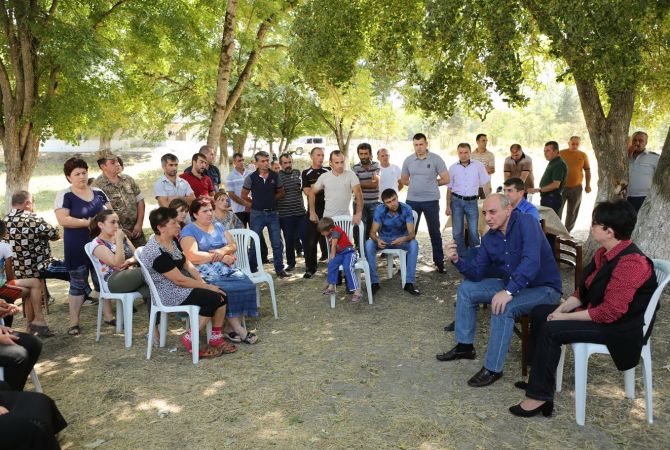Formally launched in 2006, The Paros Foundation and its staff in Armenia and the United States have earned a reputation as the “go to” organization to oversee small and medium-sized project implementation in Armenia. Beginning with Paros supporting for seven exemplary local non-government organizations working with children, people with disabilities and the arts, the foundation works towards helping build a sustainable and vibrant homeland while improving living conditions for its most vulnerable populations.
With an aggressive goal of identifying, vetting, fundraising for and ultimately implementing 100 special projects, The Paros Foundation launched the Paros 100 for 100 Projects for Prosperity in October of 2011 to commemorate the centennial of the Armenian Genocide. Following the successful completion of this initiative, the Foundation’s leadership agreed to continue operating via this project-based model of philanthropy, and launched the “Paros Projects for Prosperity.”
To facilitate volunteerism, The Paros Foundation launched its SERVICE Armenia program in 2013. This Armenia-based service program provides participants an opportunity to travel to, and experience all that Armenia has to offer while helping make a difference.
Donations to The Paros Foundation, a 501(c) 3 organization, are tax-deductible to the fullest extent allowed by law. The Foundation underwrites100% of administrative costs allowing all donor contributions to be allocated directly to the projects.
To learn more about the Paros Foundation or its projects or to sponsor a project of the Paros Foundation’s Projects for Prosperity initiative, please visit www.parosfoundation.org
Armenian families are still living in containers dating to a 1988 quake
By Dan Carsen
GlobalPost
Back when Armenia was still a Soviet republic, it suffered an earthquake so devastating the USSR actually asked the United States for help.
It was in December 1988. Tens of thousands died and some half a million were left homeless. After local authorities realized how overmatched they were, shipping containers full of relief supplies flooded in.
So, picture desperate families, a harsh Armenian winter, and shipping containers everywhere. An immediate solution presented itself: People moved into the containers. They were better than freezing to death, but not much better. They lacked heating, cooling, plumbing, windows and wiring. Desperate people burned toxic quake debris and trash to cook and keep warm.
The situation was supposed to be temporary. For all its faults, the Soviet Union did provide housing for many. But soon the USSR went the way of so many of its crumbled Armenian buildings. Regional conflicts flared up and new nations struggled to adapt to a completely different economic system. Some of the struggles continue, and today, there are still families living in those same shipping containers.
Armenians call them domiks, Russian for “little houses.” In the hard-hit city of Gyumri alone, roughly 10,000 people — men, women, children, generations — still live in them. The domiks were barely habitable to begin with. Though some have improvised insulation and jerry-rigged wiring, they’re generally worse than they were before. After almost 30 years, they’ve rotted and they’re increasingly unstable.
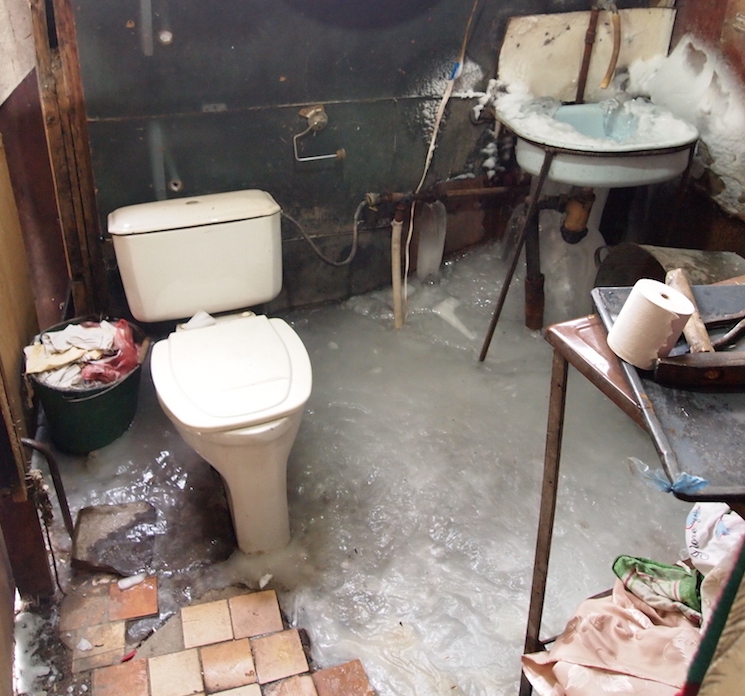

Only tremendous effort and ingenuity keep the domiks from being fatally cold in winter and ovens in summer.
As I learned through interpreters, many of the domik families share a similar story: High unemployment drove a breadwinner to work abroad, often in Russia, but for reasons X, Y or Z, the money stopped coming.
Domik resident Melina grew up in and out of orphanages. She and the other residents only wanted their first names used in the story. Melina says she and her two children face a choice between having money for necessities and having their husband and father around. Artyom, a laborer who grew up in a domik, had been working in Russia but came back to his family when that opportunity dried up. Now he can’t find work, and they’re in debt. Melina says they just want their daughters to grow up healthy and have a chance at a comfortable life.
But between the various environmental factors and other symptoms of poverty, “domik kids” are sometimes stunted, often sick, and even more often ostracized at school.
And yet when I visited a cluster of domiks behind a gas station in Gyumri this summer, the families living there welcomed me into their homes.
One reason is that I’m traveling with Vahan Tumasyan. Through the Gyumri-based Shirak Centre aid group, he and others have been bringing domik residents firewood and food and have helped register them with authorities, so they’re officially “people” (with addresses).
There’s no real pattern to where the domiks are, except that they’re generally in undesirable spots, sometimes on land contaminated by defunct Soviet industrial plants. There are single, isolated domiks and there are larger clusters. Regardless, their inhabitants are basically squatters.
All this points to another reason — besides the generally welcoming culture — why we were invited in: When Tumasyan brings outsiders through, the domik families know they might get a new apartment.
“Twenty-eight years later the shipping containers have rotted, and they’re just awful, awful living conditions, especially for the children,” says Peter Abajian, director of the Paros Foundation, a small nonprofit working with the Shirak Centre to get the families into better housing. (Full disclosure: Abajian is married to my wife’s cousin.)
“Their parents have lived in them first and grown up in them,” he says. “And now these children are living in them. These kids have sort of lost track of what a normal life should be.”
The nonprofit partnership provides the money and paperwork needed to get families who sign agreements and meet other criteria into decent apartments. The groups also tear down vacant domiks, providing work, distributing salvageable materials and firewood, and improving the neighborhoods.
But even as Abajian hustles to raise funds from the Armenian diaspora, the numbers are daunting: It costs roughly $20,000 to move a family from a domik to an apartment. Do the math, and that’s a $50 million problem in Gyumri alone, far more than the nonprofits take in.
So the Paros Foundation is trying something else, too, with an eye toward the long term.


“The domik kids don’t need arts and crafts,” Abajian says. “They need a meal so they can think, so they’re not starving, so they can do some homework.”
They need other things too, which is why the Paros Foundation created Debi Arach — “moving forward” in Armenian, a year-old youth center in Gyumri meant to improve domik kids’ prospects through a holistic approach. It serves a total of 140 kids aged 6 to 17 in two groups that each come three times a week.
Housed in a rental building that used to be a restaurant and hotel, Debi Arach has computers, classes to reinforce school lessons, and vocational training. As Armenia modernizes, demand for IT experts is outpacing supply. Much of the training at Debi Arach is geared toward computer careers. “The promise is it will get you to a level where you’ll take care of your family, you’ll be able to rent a home and live a normal life here in Gyumri,” Abajian says.
Ashot, 7, passes time in the domik where he lives with his mother and two sisters. They had been living and working in Russia but came back last year. The Shirak Centre has supported them with basic supplies.
In addition to its eight teachers, the center has a nurse, a psychologist, and maybe most importantly, places where kids can safely bathe and eat healthy food.
When the center started serving meals last year, Abajian says, students didn’t touch the salad. “It turns out they didn’t know what it was. They know bread. They also didn’t know how to sit at a table and eat together, so the teachers sat with them and created this family atmosphere they don’t have in the domiks. And most of them didn’t know how to use the bathrooms because a lot of their schools don’t have bathrooms either.”
Another thing domik kids lack is private space.
“So we’ve made sure that each kid has a locker here,” Abajian says. “They can store clean shoes to wear when they come. We’ve provided summer shoes and winter boots to make getting here easier.”
At the end of a long day of renovations on the building and coordinating a visit from an American student service group, I ask Abajian why he does this.
“It’s the kids, absolutely. We have to try to save them.”

